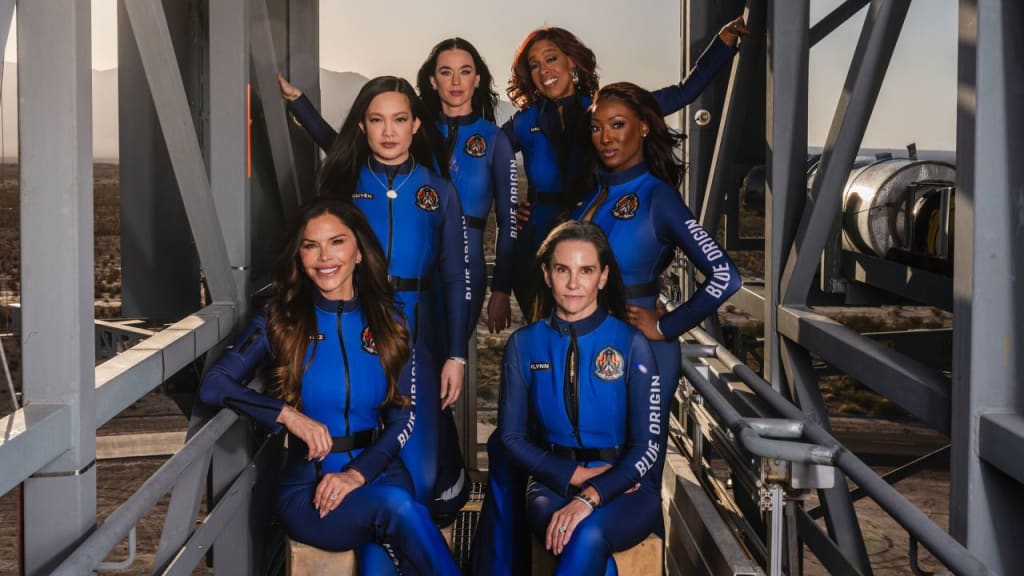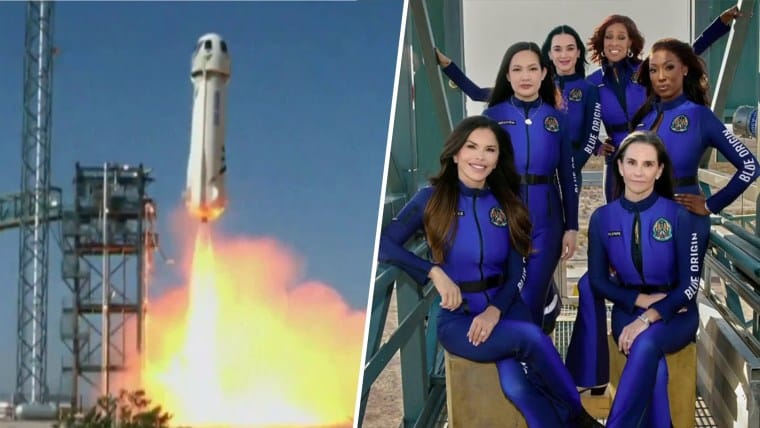The surprising controversy behind Blue Origin's all-female crew mission that has scientists divided over what actually counts as "space"

Katy Perry and Gayle King are about to become "astronauts" – but whether they'll actually reach "space" depends entirely on who you ask.

A Star-Studded Journey to the Edge
Blue Origin is making headlines with its upcoming mission featuring an all-female crew of six passengers, including pop superstar Katy Perry and CBS journalist Gayle King.
The 10-minute suborbital flight, scheduled for Monday, will carry the women more than 100 kilometers (62 miles) above Earth's surface.
Also joining the historic mission are aerospace engineer Aisha Bowe, pilot Kerianne Flynn, activist Amanda Nguyen, and Blue Origin's own Lauren Sánchez, who collaborated with fashion brand Monse to redesign the company's flight suits specifically for this all-female launch.

But beneath the celebrity buzz and fashion upgrades lies a surprisingly heated scientific debate that has divided the aerospace community for decades.
The Invisible Line That Separates Us From the Cosmos
Where exactly does Earth end and space begin?
It's a question without a universally accepted answer, despite its seemingly fundamental nature.
Blue Origin's New Shepard vehicle will carry Perry, King and their fellow passengers just beyond what's known as the Kármán line – 100 kilometers (62 miles) above sea level.

This invisible boundary, named after Hungarian-American physicist Theodore von Kármán, is recognized by the Fédération Aéronautique Internationale (FAI) – the world's air sports governing body – as the official edge of space.
But here's where things get complicated: the United States government and military have long used a different standard – 50 miles (about 81 kilometers).
A Battle of Billionaires and Bragging Rights
The definition debate isn't merely academic – it's become a point of fierce competition between rival space tourism companies.

Blue Origin, founded by Jeff Bezos, has publicly jabbed at Richard Branson's Virgin Galactic, which flies to around 88.5 kilometers (55 miles) – below the Kármán line but above the U.S. government threshold.
In a 2021 social media post, Blue Origin claimed "none of our astronauts have an asterisk next to their name" – a thinly veiled criticism suggesting Virgin Galactic passengers weren't "real" astronauts.
The spat highlights how these invisible boundaries have very real implications for marketing, prestige, and the commercial space tourism industry worth billions.

The Science Behind the Controversy
The Kármán line isn't arbitrary – it represents a physical phenomenon.
It marks the approximate altitude where traditional aeronautics no longer works. Above this height, the atmosphere becomes so thin that an aircraft would need to travel at orbital velocity to generate enough lift to stay aloft.
But even Kármán himself wasn't precise in his calculations. A 2014 study noted that the line fluctuates between 84 and 100 kilometers due to atmospheric dynamics.
Some researchers, like Spence Wise at Redwire Space, argue a more accurate boundary is closer to 88 kilometers (55 miles) based on how reentering objects behave.

The FAI considered lowering its definition in 2018 based on new research but ultimately kept the 100-kilometer standard after further analysis.
So Will Katy Perry Actually Reach Space?
The answer depends entirely on which definition you accept.
By the internationally recognized Kármán line standard, yes – Perry, King and their fellow passengers will technically cross into space during their brief suborbital journey.
By the U.S. government's 50-mile definition, they'll go well beyond what's needed to be considered astronauts.
But they'll still be far below the 400-kilometer altitude where the International Space Station orbits, and they'll experience weightlessness for only a few minutes – not because they've escaped Earth's gravity, but due to the same physics that creates the floating sensation at the peak of a roller coaster.
Former NASA astronaut Terry Virts perhaps put it best when he told National Geographic: "If you're strapping your butt to a rocket, I think that's worth something."
"When I was an F-16 pilot, I didn't feel jealous about Cessna pilots being called pilots. I think everybody's going to know if you paid to be a passenger on a five-minute suborbital flight or if you're the commander of an interplanetary space vehicle. Those are two different things."
As Katy Perry and her fellow passengers prepare to experience the black void and curved Earth through their capsule windows, the scientific debate continues – a reminder that even in our age of technological marvels, the boundary between Earth and the cosmos remains surprisingly fluid.




